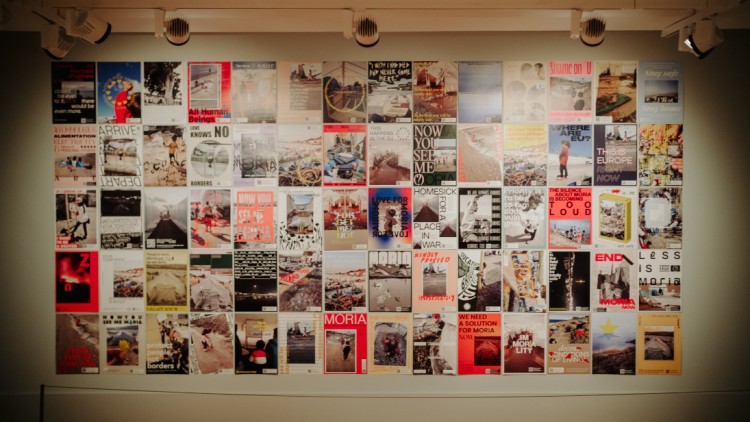Against the Image
A spotlighted exhibition as part of Ulster Museum 50
Inside the exhibition
Tabitha Soren’s (b. 1967) Surface Tension (2013-2021)
Explores how most of us engage with the outside world through a device in our hands. This connection is made through the physical touching and swiping of a screen; endlessly scrolling through huge amounts of images that depict a wide variety of emotion, experience and even trauma. Though we are connecting to the world through this touch, we are also keeping a distance and risk becoming isolated from what we are seeing. Soren creates her images by shooting the grime and debris that accumulates on her iPad with a large format camera. The background images are taken from her various devices and include images from social media and the artist’s web history. These works document the tangible evidence of our bodies meeting machines through the vigorous and expressive marks our touch leaves behind. For Soren, a California-based photographer, these machines represent corporate media structures.
Alexandra Rose Howland
Alexandra Rose Howland (b. 1990) has spent the last decade living in the Middle East, creating work that challenges traditional coverage of the region and its geopolitics. Leave and Let us Go (2021) is the result of a five-year project photographing the Mosul Road that connects Erbil and Al Nuri Mosque in Iraq. It interweaves the artist’s own photographs with those taken by numerous people she met during her years in Iraq. From selfies, to photos of loved ones, to Snapchat videos on the frontline, this work presents an intimate portrait of Iraq; a country that is often misunderstood and misrepresented in the media. Demonstrating the conflicting realities that exist within the country, the artist says this project “explores Iraq, celebrates Iraq, grieves for Iraq, and dreams for Iraq.”
Mória
Better known as Mória Refugee Camp, or simply Mória—was described as an open air prison. Located on the Greek island of Lesbos, it was the largest refugee camp in Europe until it was burned down in September 2020. A new camp has been built nearby: Kara Tepe—Moria 2. Refugees in the camp are not allowed to take pictures, and there are strict rules limiting press coverage, meaning the conditions in the camp are often not recorded or seen by the public. In 2020 Now You See Me Moria, was started by Amir, a young Afghan refugee in Moria, and Noemí, a Spanish image editor based in the Netherlands. In an effort to make Europeans aware of the inhumane situation in Moria they launched an Instagram account sharing photos of daily life in the camp taken by Amir and other refugees. Designers were then invited to create posters with these images in order to spread awareness, tackle the lack of information on the camp, and the plight of refugees in general. The project grew quickly, with over 500 posters being made, shining a light on the crisis and igniting a global project on the refugee crisis that the public can be part of.
Victor Sloan
Victor Sloan is regarded as one of Ireland’s greatest contemporary photographers. His work addresses a range of social, religious and political issues, though he is best known for his photography of the Northern Ireland conflict. Sloan’s work is highly distinctive, created through altering photographs by painting, marking and scoring directly onto photographic negatives. Through distorting, abstracting and adding layers to his photographs Sloan reminds us of the layers of meaning behind an image and the ways in which all photographs can be manipulated. Sloan’s early work was produced during the Troubles; a time when much of the coverage of the conflict was being captured by visiting photojournalists and whose images were often seen as an accurate and ‘trustworthy’ depiction of the events they documented. Through the distortion of his photographs, Sloan draws attention to the notion that images can be changed while also displaying the complex realities of a conflict, and Northern Irish society more generally, not portrayed by the media.
This exhibition was an exciting partnership between the museum and the Belfast Photo festival. Co-curated by Anna Liesching and Clare Gormley it has been a great experience to combine our expertise and knowledge and has attracted new audiences to the galleries. Some wonderful events have come out of the experience such as the symposium on Mass Media, (Mis)information democracy and the digital age. Other partners include U.S. Embassy and Northern Irish Art Network.













